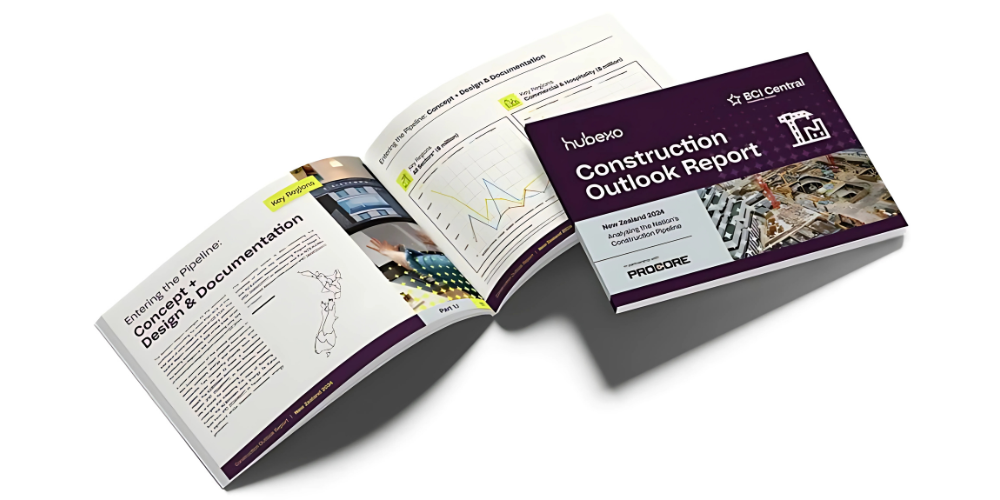- Rumah
- >
- Risks and Opportunities Shaping New Zealand’s Construction Industry in 2025
Risks and Opportunities Shaping New Zealand’s Construction Industry in 2025

New Zealand’s construction industry faces 2025 with economic pressures, project deferrals and a housing crisis, balanced by resilient infrastructure and a renewed focus on sustainability and technology.
As New Zealand’s construction industry enters 2025, it faces a challenging landscape shaped by economic pressures, elevated costs and a renewed focus on sustainable, innovative solutions.
Government reforms, coupled with the demand for affordable housing, are pushing industry leaders to embrace new technologies and form strategic partnerships to tackle housing shortages and achieve net-zero goals. However, clearer policies and targeted incentives are needed to accelerate progress and ensure long-term success in these areas.
What does the future hold for New Zealand’s construction industry? By analysing pipeline data and incorporating exclusive insights from industry leaders in BCI’s newly released Construction Outlook Report – New Zealand, we can better understand the current impacts on market resilience and forecast trends for the upcoming year.
The Construction Outlook provides valuable insights into the performance of key building sectors and project regions since late 2022 as well as exclusive insights from sector leaders who are navigating emerging challenges and pioneering solutions for growth.
Respondents included:
- Architectus, Principal, Patrick Clifford
- Barnes Beagley Doherr, Director, David Doherr
- Callaghan Innovation, Head of Construction Innovation, Nick Sterling
- CMP Construction NZ Ltd., Commercial Manager, Andrew Moore
- Cook Brothers Construction, Business Development Director, Simon Glass
- CoreLogic NZ, Chief Economist, Kelvin Davidson
- DKO Architecture, New Zealand Studio Director, Dan McNelis
- Global GreenTag, Global Sales and Business Development Manager, Tyann Scott
- Icon, NZ Director, Dan Bosher
- Jasmax, Principal, Nick Moyes
- Maddren Homes, Managing Director, Keegan Anderson
- Naylor Love, Business Development Director, Scott Watson
- New Zealand Government, Minister for Building and Construction, Hon Chris Penk
- Ninety-Four Feet, Managing Director, Dean Rzechta
- Ockham Residential, Chief Executive Officer, William Deihl
- Plus Architecture, Director, Hamish Davies
- Prendos New Zealand Limited, Director + Registered Architect, Natasha Cockerell
- Wolfbrook Residential, Chief Executive Officer, Guy Randall
5 Key Risks Shaping the New Zealand Construction Sector
Here are five key risks influencing the New Zealand construction industry extracted from the latest edition of the Construction Outlook – New Zealand.
Economic challenges will persist in 2025
New Zealand’s construction industry is bracing for a challenging 2025 as economic pressures, project deferrals and the ongoing housing crisis continue to take their toll.
According to Ashleigh Porter, Hubexo APAC President, “Persistent inflation, soaring construction costs and labour shortages have tested the resilience of industry players”.
The industry has witnessed a dampened recovery trajectory due to these pressures but easing interest rates and advancements in technology offer a glimmer of hope.
Emerging technologies, including predictive analytics and sustainable design software, are being embraced by some companies to navigate these difficulties more efficiently and sustainably.
Delayed and deferred projects highlight uncertainty
Project deferrals are another significant concern. A noticeable rise in deferred projects, especially within the residential sector, reflects a cautious approach among builders and developers amidst financing challenges and broader economic uncertainty.
Deferred projects increased from 2.2% in Q3 2023 to 3.8% in Q3 2024, highlighting the hesitancy to commit to new developments under current market conditions.
Keegan Anderson, Managing Director at Maddren Homes, notes the mounting complexities in project approvals: “Even with leads, cash flow won’t start until mid-2025 due to the complex process—what used to be a one-page document has turned into 70 pages of reports and reviews. Council delays further compound the issue, stretching approvals from two months to seven or eight”.
Reliance on energy and resources heightens sector vulnerability
The energy and resources sector is expected to dominate construction activity in 2025, accounting for approximately 46% of commencement values from Q4 2024 to Q3 2025. While this offers significant investment opportunities, it also exposes the industry to risks tied to global market volatility, fluctuating commodity prices and geopolitical tensions.
This disproportionate focus has left other critical sectors—such as residential, community and hospitality—facing less attention. Additionally, labour shortages in specialised areas like renewable energy and infrastructure intensify competition for skilled workers, further destabilising the broader construction ecosystem.
“When pipeline visibility diminishes, so does appetite to invest in skills and technology. We see the current government’s new infrastructure agency as a positive step toward addressing uncertainty surrounding infrastructure projects, such as hospitals and public transport”, Nick Moyes, Principal at Jasmax said.
Increased risk of insolvencies
Rising insolvencies remain a major concern with 56% of developers responding to the Sentiment Survey citing contractor insolvency as a major risk (up from 41% in 2023).
Financial pressures, including high interest rates, material cost increases and labour shortages, have left many builders and subcontractors struggling with cash flow. Subcontractor failures are particularly problematic, causing delays, added costs and reputational damage across projects.
“The level of insolvencies within the New Zealand market has risen of late and there is a real danger that this will increase into 2025,”, said David Doherr, Director at Barnes Beagley Doherr.
“Designers, contractors and estimators are all feeling the squeeze with more competition for fewer projects. This will inevitably put pressure on fees and margins and, as such, afford those parties with less time and resources to collaborate on projects.”
Government spending cuts impacting the industry
New Zealand’s construction industry faces growing uncertainty as government spending shifts, delaying critical projects nationwide. Recent budget reductions in infrastructure have left developers and contractors wary, curbing opportunities for diversification. While major energy projects progress, cuts to housing, community infrastructure and transport are amplifying industry pressures.
These cuts are hitting regional economies hardest, where public projects like hospitals and schools are vital to local construction activity. Delays and cancellations are straining cash flow for contractors who rely on government work, increasing financial risks across the supply chain.
“The lack of government spending after the new government halted projects like schools and hospitals is the biggest risk. Even if funding resumes by Christmas, a 12-month lag will increase pressures on the industry and the likelihood of supplier and subcontractor failures,” said Scott Watson, Business Development Director at Naylor Love.

Curious about New Zealand’s construction industry? Dive deeper by downloading this year’s BCI Construction Outlook.
AS SEEN:






